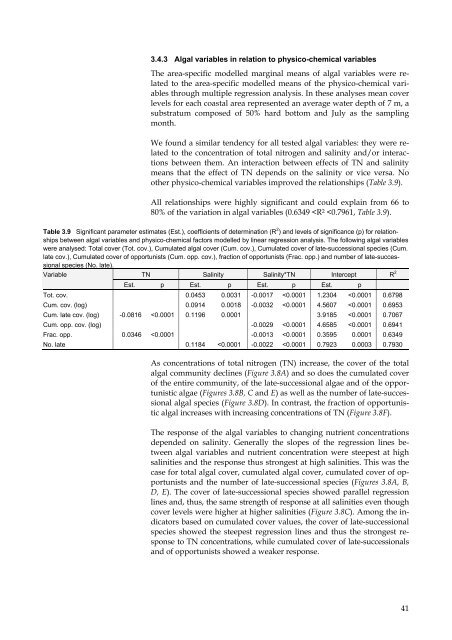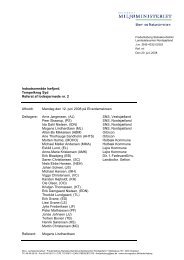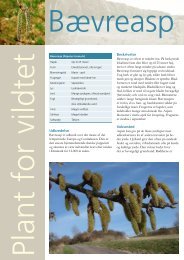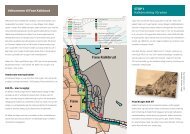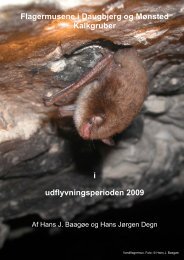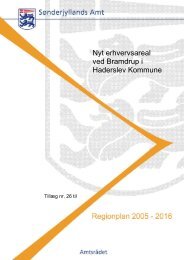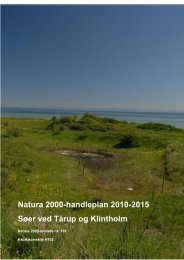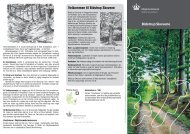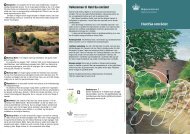Macroalgae and phytoplankton as indicators of ... - Naturstyrelsen
Macroalgae and phytoplankton as indicators of ... - Naturstyrelsen
Macroalgae and phytoplankton as indicators of ... - Naturstyrelsen
You also want an ePaper? Increase the reach of your titles
YUMPU automatically turns print PDFs into web optimized ePapers that Google loves.
3.4.3 Algal variables in relation to physico-chemical variables<br />
The area-specific modelled marginal means <strong>of</strong> algal variables were related<br />
to the area-specific modelled means <strong>of</strong> the physico-chemical variables<br />
through multiple regression analysis. In these analyses mean cover<br />
levels for each co<strong>as</strong>tal area represented an average water depth <strong>of</strong> 7 m, a<br />
substratum composed <strong>of</strong> 50% hard bottom <strong>and</strong> July <strong>as</strong> the sampling<br />
month.<br />
We found a similar tendency for all tested algal variables: they were related<br />
to the concentration <strong>of</strong> total nitrogen <strong>and</strong> salinity <strong>and</strong>/or interactions<br />
between them. An interaction between effects <strong>of</strong> TN <strong>and</strong> salinity<br />
means that the effect <strong>of</strong> TN depends on the salinity or vice versa. No<br />
other physico-chemical variables improved the relationships (Table 3.9).<br />
All relationships were highly significant <strong>and</strong> could explain from 66 to<br />
80% <strong>of</strong> the variation in algal variables (0.6349


